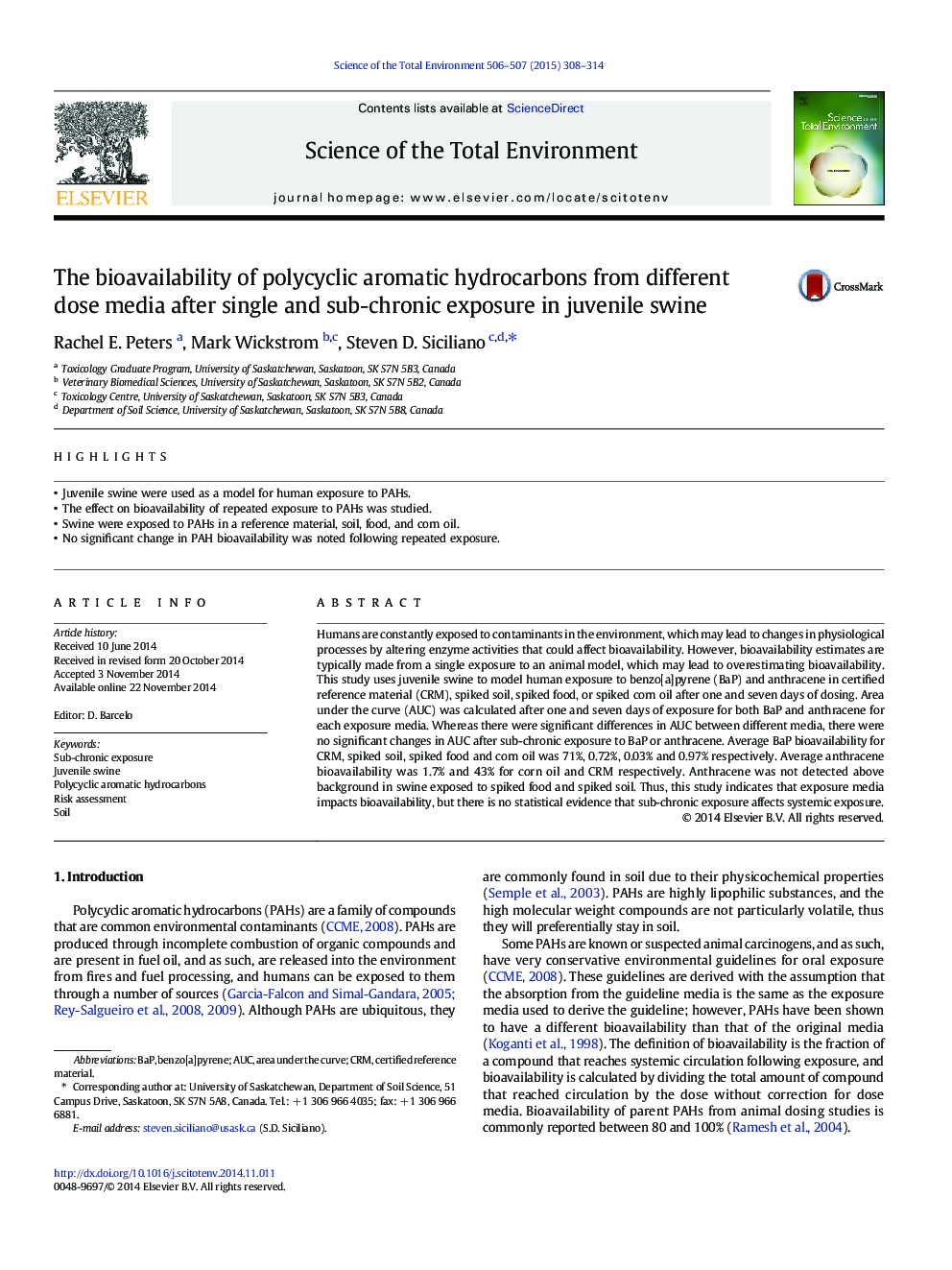| کد مقاله | کد نشریه | سال انتشار | مقاله انگلیسی | نسخه تمام متن |
|---|---|---|---|---|
| 6327710 | 1619769 | 2015 | 7 صفحه PDF | دانلود رایگان |
عنوان انگلیسی مقاله ISI
The bioavailability of polycyclic aromatic hydrocarbons from different dose media after single and sub-chronic exposure in juvenile swine
ترجمه فارسی عنوان
قابلیت دسترسی بیولوژیک هیدروکربن های چند حلقه ای معطر از رسانه های دوزهای مختلف پس از قرار گرفتن در معرض انسداد مجاری و زیر مزمن در خوک های نوجوانان
دانلود مقاله + سفارش ترجمه
دانلود مقاله ISI انگلیسی
رایگان برای ایرانیان
کلمات کلیدی
موضوعات مرتبط
علوم زیستی و بیوفناوری
علوم محیط زیست
شیمی زیست محیطی
چکیده انگلیسی
Humans are constantly exposed to contaminants in the environment, which may lead to changes in physiological processes by altering enzyme activities that could affect bioavailability. However, bioavailability estimates are typically made from a single exposure to an animal model, which may lead to overestimating bioavailability. This study uses juvenile swine to model human exposure to benzo[a]pyrene (BaP) and anthracene in certified reference material (CRM), spiked soil, spiked food, or spiked corn oil after one and seven days of dosing. Area under the curve (AUC) was calculated after one and seven days of exposure for both BaP and anthracene for each exposure media. Whereas there were significant differences in AUC between different media, there were no significant changes in AUC after sub-chronic exposure to BaP or anthracene. Average BaP bioavailability for CRM, spiked soil, spiked food and corn oil was 71%, 0.72%, 0.03% and 0.97% respectively. Average anthracene bioavailability was 1.7% and 43% for corn oil and CRM respectively. Anthracene was not detected above background in swine exposed to spiked food and spiked soil. Thus, this study indicates that exposure media impacts bioavailability, but there is no statistical evidence that sub-chronic exposure affects systemic exposure.
ناشر
Database: Elsevier - ScienceDirect (ساینس دایرکت)
Journal: Science of The Total Environment - Volumes 506â507, 15 February 2015, Pages 308-314
Journal: Science of The Total Environment - Volumes 506â507, 15 February 2015, Pages 308-314
نویسندگان
Rachel E. Peters, Mark Wickstrom, Steven D. Siciliano,
